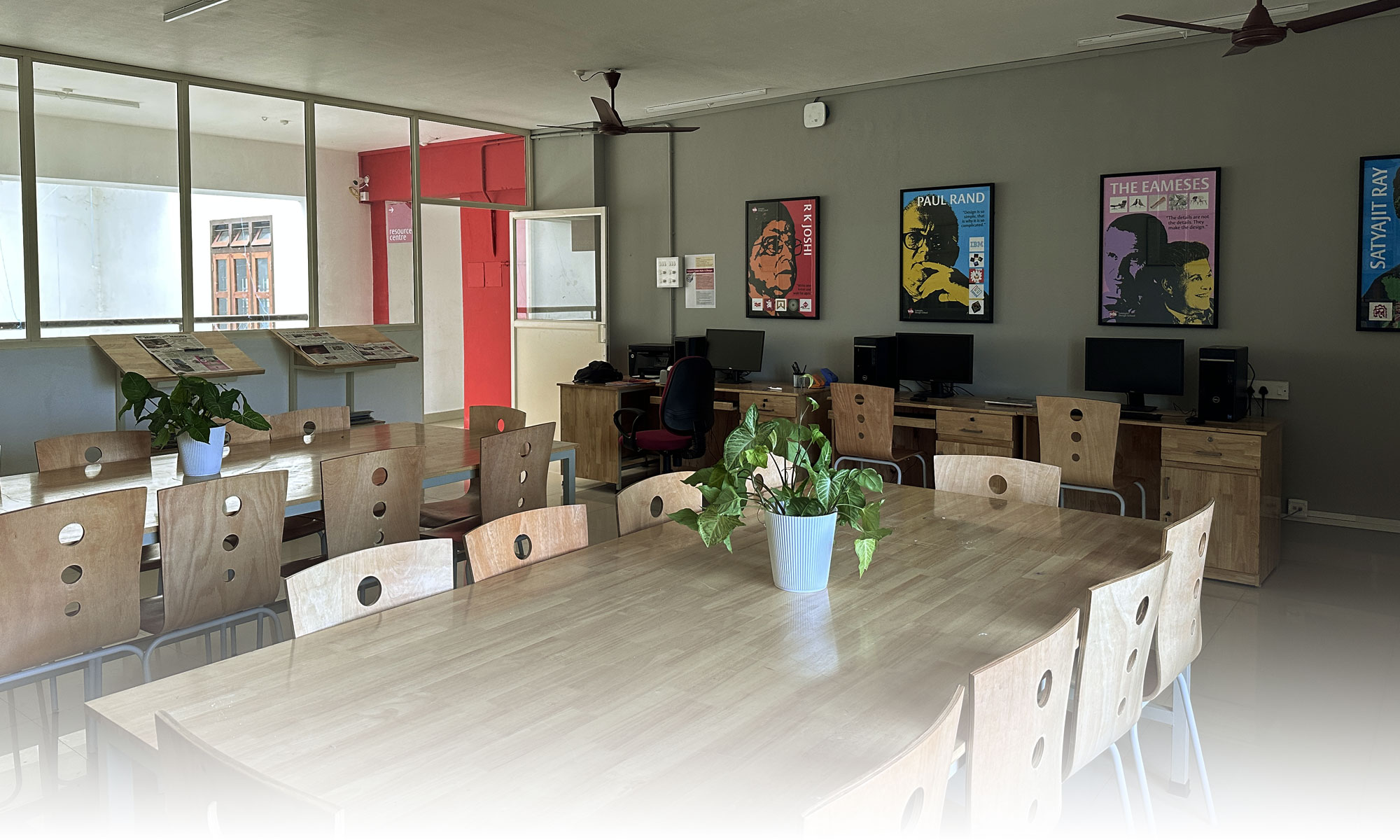A new way of learning
Design education starts with unlearning, where students are made to unburden themselves of several years of rote learning and pick up drawing and visualising skills along with creative thinking abilities. Classes are in audio-visual format with no prescribed textbooks. Starting with art and craft, they move onto learn design, technology and management to be a full-fledged designer.
Unlike other courses which are examination and marks oriented, design students go through assignments, submissions, presentations, juries, internships and projects which help them evolve as designers under the able mentorship of the faculty.
Acquiring basic skills and thought processes
Students learn drawing and sketching, while exploring various mediums, materials, forms, structures and spaces in classrooms and workshops. Learning geometry, colour and elements of they learn the alphabet of design. The assignments and projects are designed to make them acquire the necessary skills and thought processes needed for a designer progressively. Continuous evaluation and feedback help students to improve their work steadily over the year.
They are also exposed to the history of art and design to build the context and learn about pioneers in design through lectures, presentations and films. They will watch dozens of films which are known for their design aspects. They will listen to design practitioners and learn their methods first hand.



Learning by doing
Lectures are hardly an hour or so long, and students are given assignments and projects which they do in an iterative manner, improvising and fine-tuning them gradually till a level of perfection is achieved. Faculty work closely with students mentoring them on every stage to keep them on track.
Interdisciplinary learning
Unlike other courses, design follows an interdisciplinary path, blending Arts, Humanities, Science, Technology and more. Having an open mind and a curious nature is a prerequisite to pursue design education.
Programme structure
Every semester comprises of 20 weeks with 6–8 courses. Courses are run one after another in block modules with every course taking 2–4 weeks, ensuring undivided attention. Wednesdays are spent for general studies with guest talks, short workshops, industrial visits and electives to supplement core course learnings. There could be workshops and visits across weekends too.
Evaluation system
Continuous internal evaluation with assignments and end semester juries in lieu of written examinations take off the stress of examinations and need for mugging up. Regular exhibition of works and expert critiques provide valuable feedback to improve work at every stage.



Varied insights
They will also have short modules and field visits to sensitise them to the nuances of art, craft and design. Students will also have short courses to improve their writing and presenting skills in English.
Having acquired hand skills, towards the end of the year, they are also introduced to basic design software, typography and photography. A course on design thinking and design process is followed by an exposure to the highlights of the three design disciplines from which they have to choose one to specialise in the next three years.
Internships and projects
Students undergo live internships in seventh semester to understand industry requirements, work culture and to make connections for a future career. Final semester is entirely devoted to a project which puts all their learnings across semesters to test.
Placements and prospects
Well-trained and multi-talented designers are in short supply in the country with the industry offering excellent job prospects and pay packages in IT, publishing, media and manufacturing sector. Many designers however choose to work on their own as independent design consultants or run small studios on their own to cater to different niche areas.

